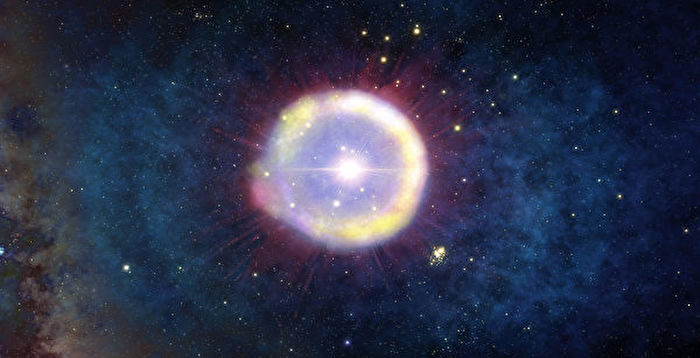Artist’s rendering of Pop III (Pop III) stars in the very early universe. (NOIRLab/NSF/AURA/J. da Silva/Spaceengine/Public Domain)
[The Epoch Times, June 17, 2023](The Epoch Times reporter Linda compiled a report) The James Webb Space Telescope (JWST) may have just discovered the first stars in the universe. If so, it would end one of the greatest search missions in astrophysics. This is a remarkable achievement for Webb, considering Hubble’s long and fruitless decades of searching for these stars.
The researchers refer to the oldest stars as Population III, or Pop III. Because sometimes astronomers name things the opposite for some reason, with Pop III being the oldest star, Pop II in the middle, and Pop I being the most recently formed star. Our Sun belongs to Population I (Pop I).
Using the Webb telescope, an international team has found the first evidence of a Pop III star, an international team announces in a new paper. The paper was uploaded to the preprint database arXiv on June 6 and has not yet been peer-reviewed.
There are two key points to this finding.
One of them is the power of the Webb telescope. Because the speed of light is finite, the farther you can see, the earlier in time you can see. The Webb telescope can see far, far away. The team used it to observe a bright, very distant galaxy, GN-z11, hoping to obtain a powerful and sharp spectrum of when the universe was only about 400 million years old. For comparison, the universe today is about 13.7 billion years old.
Another is a stellar property called metallicity, how much heavier a star has than hydrogen or helium (a metal in astrophysics refers to any element heavier than hydrogen or helium). The metallicity of a star determines how it is classified. Pop I has the highest metal abundance and Pop III has the lowest metal abundance.
By and large, the heavy elements in the universe are produced by stars, either through nuclear fusion reactions in their inner layers, or by the instantaneous bursts of heat that occur when they go supernova. The Pop I stars currently scattered throughout the universe are made of the debris left behind when Pop II stars exploded. But Pop II stars must have started out as much older stars, because they are less metallic than Pop I, but higher than stars after the Big Bang.
So if Pop II needed more metal than the Big Bang could provide, they must have made use of the remains of the Pop III star. Pop III is composed almost entirely of hydrogen and helium, i.e. very low in metallicity. They should be very massive and don’t live very long (at least on stellar timescales) before dying in the supernova explosions that created the original metallic elements for the rest of the universe.
So, the sign that scientists have been looking for in ancient stars is very, very old and very low metallicity. And in the GN-z11 galaxy, scientists believe they have found the long-sought feature.
The researchers looked at the halo of gas on the outskirts of the galaxy GN-z11 and think that Pop III stars may have formed there. In that region, they found a very strong HeII λ1640 spectral line that shows up in the spectrum when helium is extremely hot. More importantly, there are no metallic elements around it, indicating that there are no stars with higher metallic abundance nearby. In the absence of any metals, something is making helium incredibly hot, and the team thinks they’ve finally found a Pop III star.
The observations made by the new study are extremely exciting, but it’s important to moderate that excitement right now. First, there are other possible explanations for what might have caused this HeII λ1640 spectral line. For example, there may be an active galactic nucleus in the center of the galaxy GN-z11, which leads to this spectral line.
In addition, the observation requires more further research to be finally confirmed, which requires further observations by the Webb Telescope. Webb’s time is too scarce for many researchers to come by, but the team plans to verify its observations as soon as possible. And all this is still subject to peer review.
But the new research has great potential to be validated, which means that scientists may indeed have achieved great success with one of the biggest goals in astrophysics. If this turns out to be confirmed as the first real detection of the oldest Pop III star, it would open up a whole new world of scientific exploration. ◇#
Editor in charge: Ye Ziwei
